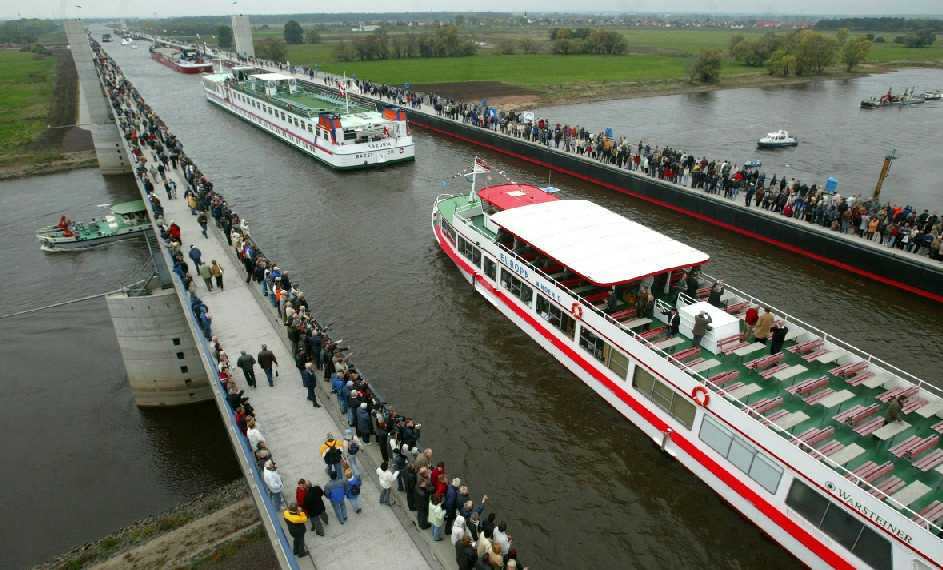

Canal Bridge, Magdeburg, Germany
The essential part of the project is Europe's longest aqueduct
with a total length of 918 m, which connects the Eastern part of the channel "Mittellandkanal"
with the Western part of the channel "Elbe-Havel-Kanal" across the river Elbe.
This construction, which makes possible direct East-West-traffic independent of
the river Elbe for the whole year for motorships and push tows, consist of a 228
m-long main bridge, which is constructed out of three sections (57.1 m/106.2
m/57.1 m) and a 690 m-long approach bridge with 16 sections.
The main bridge is a continuous girder and consists of a through bridge and the
two exterior main grider boxes. The main girder boxes are divided into 11
constructional sections with lengths from 13.8 m up to 30 m. The cross-section
consists of the upper boom, the bottom boom, the sides of the through bridges as
well as the post and diagonals of the framework.
The approach bridge is also constructed as a continuous girder of 16 sections
with equidistant spans of 42.85 m. The through bottom of the approach is
longitudinally oriented as a result of the small spans (7 longitudinal girders).
The lateral through sides are reinforced at the upper board with a box girder,
which at the same time is a traffic route.
For the steel construction of the main bridge and the construction of the
approach bridge respectively 10,000 t and 14,000 t of heavy plate type S355J2G3
(with acceptance certificate 3.1.C) were used. Concerning the dimensions, plate
thicknesses ranging from 10 to 80 mm, widths up to 4,500 mm and lengths up to
28,000 mm were used.
About 6,000 t of the total tonnage were delivered as longitudinally profiled
plates. These are plates with a continuous variable thickness in the
longitudinal direction. The maximum difference in thickness of the employed
LP-plates is 30 mm.